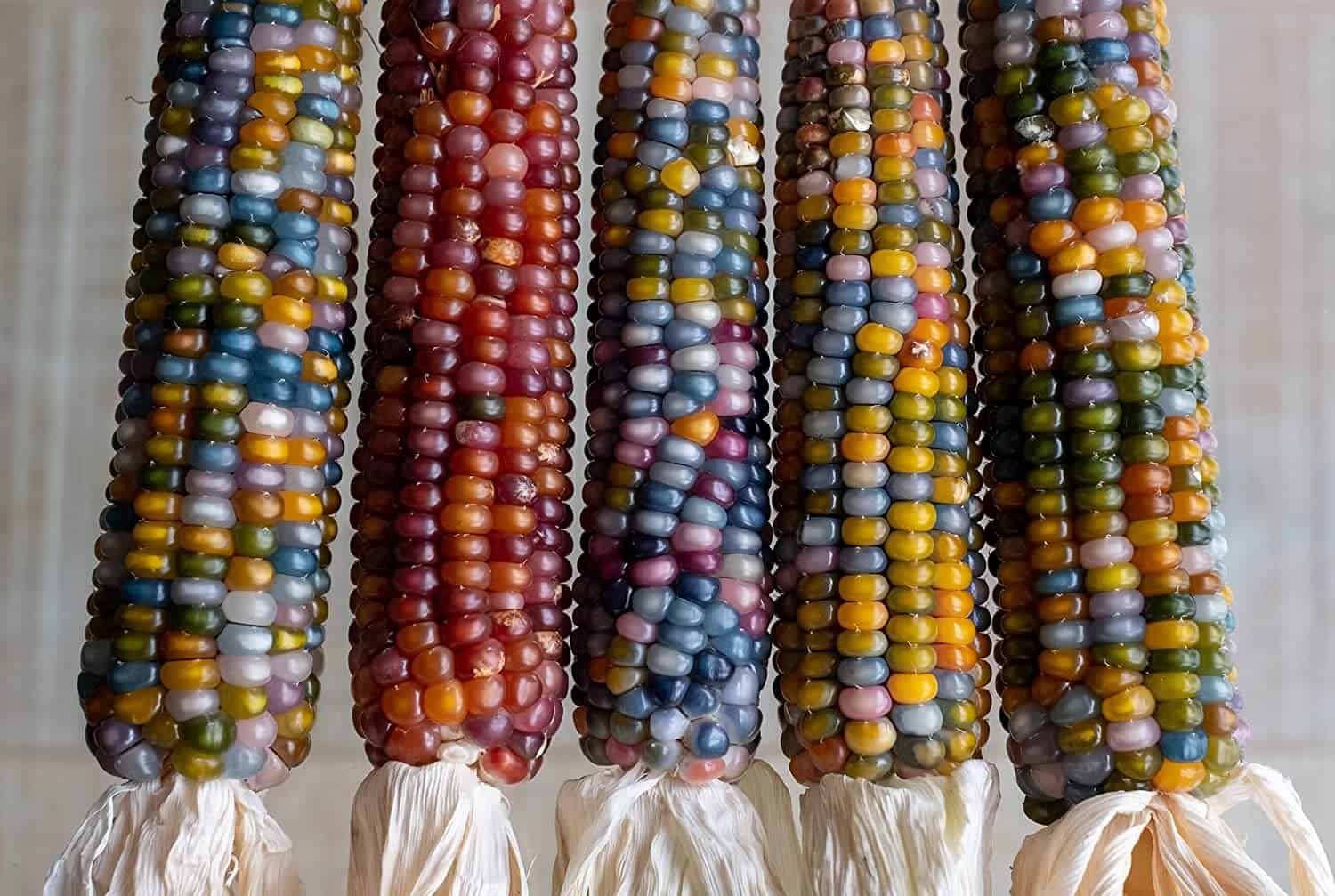
Want to grow Glass Gem Corn? If you are looking for the most colorful corn variety of all time, Glass Gem Corn is it.
What exactly is Glass Gem Corn? Think of it as Indian corn on steroids. Or LSD. Or both. But it grows like other common corn varieties. So, if you’ve grown yellow corn or sweet corn or white corn, you can grow Glass Gem Corn. (Don’t worry, I will give you some basic tips about how to grow corn below.)
Why grow colorful Glass Gem Corn seeds? Well, the dried kernels make great popcorn. You can grind the kernels into a multi-colored cornmeal. Or you can grow it for a showy fall decoration. (The kernels are simply too hard to eat them off the cob.)
How Glass Gem Corn was Born
We wouldn’t have glass gem corn today if it weren’t for the efforts of two men—Carl Barnes and Greg Schoen. So, my hat is off for both gentlemen and their love for colorful corn.
Carl Barnes, a part-Cherokee farmer in Oklahoma, began gathering heirloom corn seed varieties as an homage to his native heritage. He bred and cross bred several heirloom corn varieties. He began to get ears that contained a wide variety of colors. We’re talking about LOTS of colors. A rainbow of colors. And he kept cross breeding and planting seeds from the most colorful cobs. The result was even more colors in a single ear of corn.
Then Barnes met Greg Schoen from New Mexico. Greg was as crazy about colorful corn as Carl was. Schoen began to breed Barnes’ rainbow corn with Native American strains that he had developed. The result was even more spectacular color, and more color variety in a single ear of corn. It was Schoen who began to send Glass Gem seed corn to other corn enthusiasts throughout the world.
Rainbow Corn Goes Viral
Then the Internet took over. A photo of glass gem corn went viral in 2012. Suddenly, everyone with a garden plot wanted to grow the rainbow-colored corn. Today, Glass Gem Corn Seeds are available online from dozens of sellers. A packet of seeds sells for about $5.00.
So, if you decide to grow Glass Gem Corn, you will be in very good company indeed. Gardeners in India, Mexico, Israel, Mexico, the United States, and lots of countries around the world are growing rainbow corn.
How to Grow Glass Gem Corn: Getting Started
Now it’s time to talk about how to grow Glass Gem Corn. The good news: it’s not difficult. But having a large garden space is a real advantage. Corn is wind pollinated. So, for best results, grow enough plants so the wind can naturally blow pollen from one plant to another.
Planting a single long row of corn seeds is not the way to go. Even two rows of corn is not enough. It’s best to plant four to six rows of corn (or even more).
Planting a “corn square” is a great way to ensure proper pollination. Simply plant six or more rows and make each row about the same length as the width of all six rows.
Plant the Seeds
When you grow Glass Gem Corn, plant your corn in a spot that gets at least six hours of sun a day. (This “six hours of sunlight” rule is true for most vegetables you grow.) Corn loves well-drained soil and plenty of plant food. So, amend your soil with compost to give your Glass Gem Corn the best chance to thrive.
When planting the seeds, it is always best to follow the instructions on the seed packet. Sow the seeds directly into the soil when the last chance of frost has passed. Corn is a warm season crop, so waiting until the soil temperature is 60-65 degrees F. will speed up seed germination. The seeds should be planted about 1 ½ inches deep. Cover the seeds with soil and add a light layer of compost if you so desire. Water thoroughly to get those seeds started! Here’s a link to buy Glass Gem Corn Seeds. Home, Garden and Homestead receives a small commission from sales generated by links on this website.
Grow Glass Gem Corn: Fertilize!
Corn is a heavy feeder. That means it needs to be fertilized. I prefer to use natural and organic fertilizers because they slowly release nutrients into the soil. Homemade compost is a great fertilizer and soil conditioner.
In addition, a well-balanced fertilizer that contains nitrogen, phosphorous, and potassium. (The three big numbers listed on fertilizer packages are the percentages of Nitrogen-Phosphorous-Potassium in the fertilizer. The numbers are always listed in that order.)
Here are some good organic fertilizers to use when you grow Glass Gem Corn:
Dr. Earth Organic Tomato and Vegetable Fertilizer is a natural garden fertilizer that contains no GMOs. The slow-release formula feeds plants for several months. This fertilizer also includes pro-biotic strains of beneficial soil microbes.
Jobe’s Organics All Purpose Plant Food is a great choice for vegetable gardens. The balanced 4-4-4 formulation is OMRI certified organic. The proprietary biozome helps improve soil conditions, helps plants resist disease, and strengthens plants against drought conditions. The 16-pound bag is great for larger gardens.
Espoma Organic Garden-Tone was originally developed for professional gardeners. Garden-Tone contains 100% natural and organic ingredients. Not sludges or fillers are used. This formula helps plants develop deeper roots and superior harvests.
Harvesting Glass Gem Corn
Glass Gem Corn is a type of “flint corn.” As I mentioned earlier, this corn is not for cooking and eating right off the cob. Instead, most people leave the ears of Glass Gem Corn to dry right on the stalk.
If you want to display ears of Glass Gem Corn as a colorful decoration, go ahead and pick them from the plant. The colors are much more vibrant.
During the drying process, the color of the kernels begins to naturally fade. Drying is necessary for Glass Gem Corn kernels to be ready for popping. Dried kernels are also needed for making corn meal, and for planting in next year’s garden.
There you have it. Now you know how to grow Glass Gem Corn. So get out to your garden and plant some seeds!


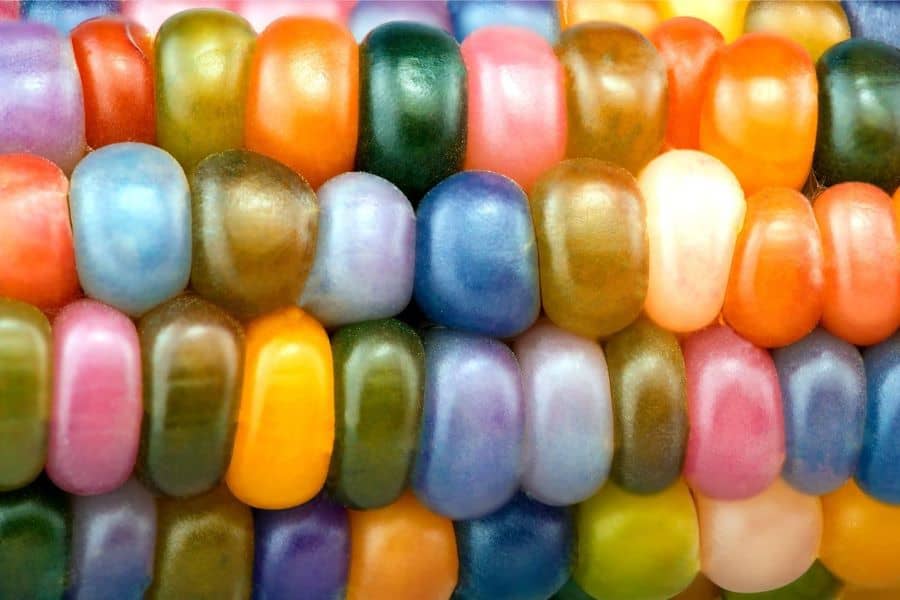

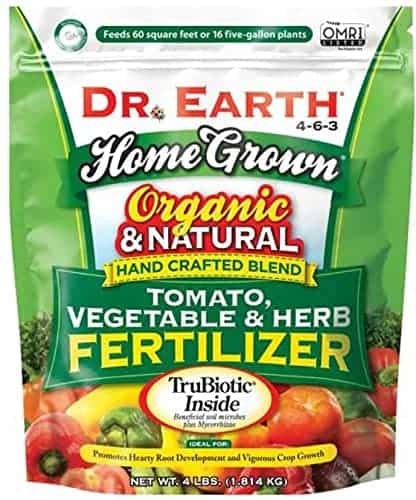
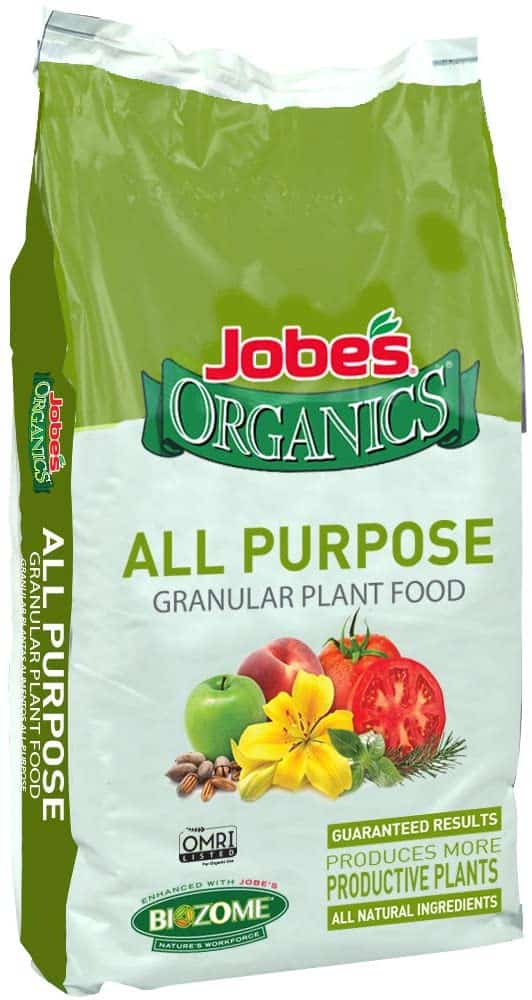
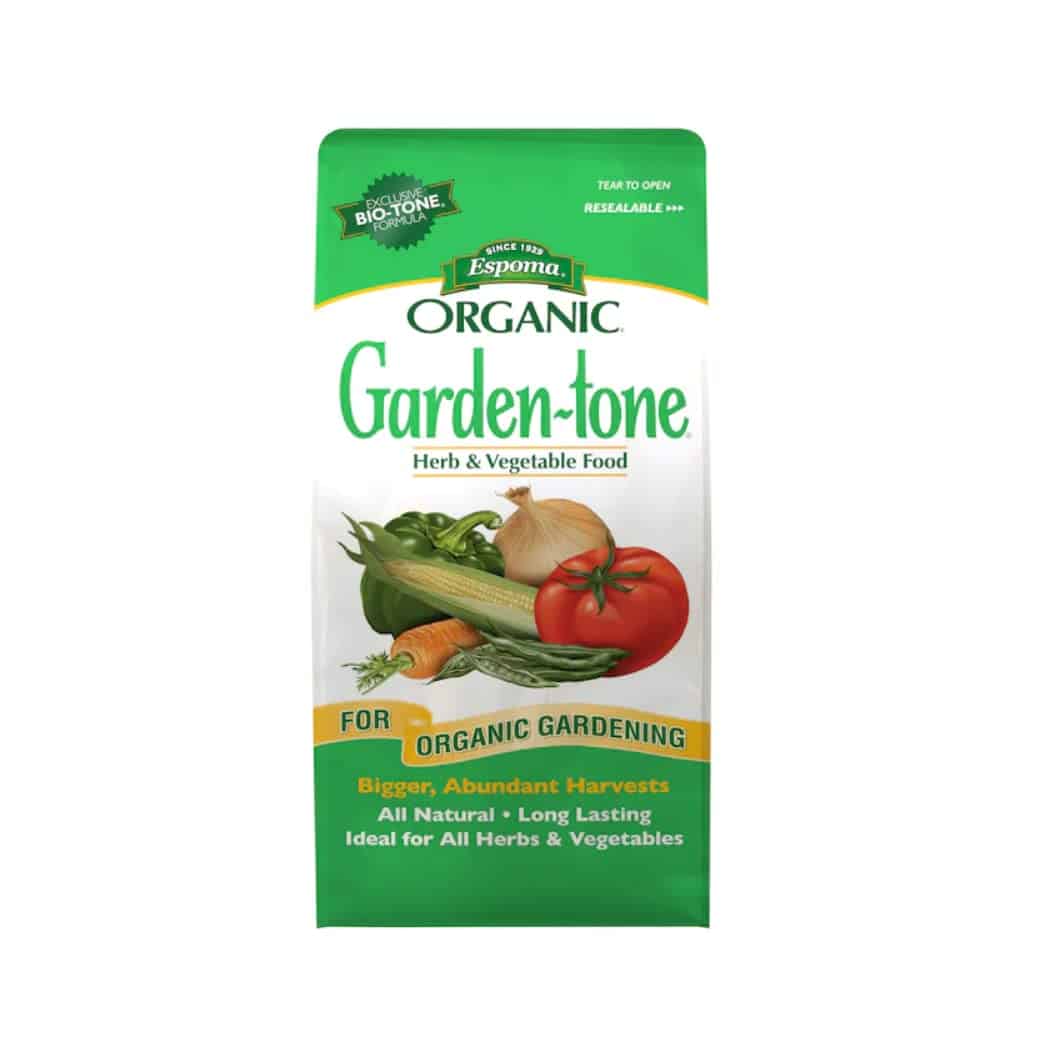

Leave a Reply